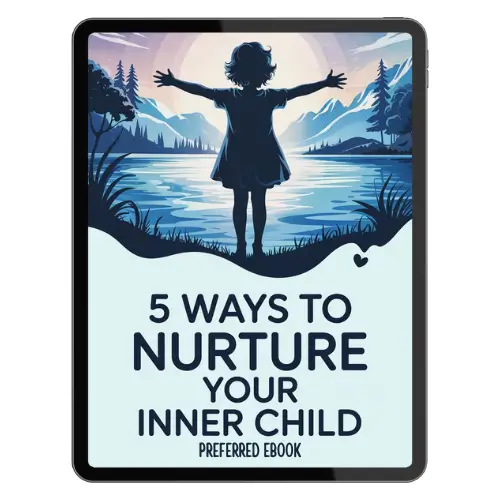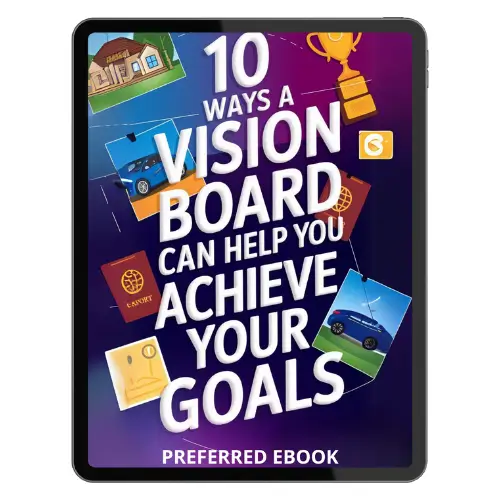Introduction
- Understanding the Inner Child
- Importance of Nurturing Your Inner Child
Chapter 1: Embrace Playfulness
- The Power of Play
- Activities to Rediscover Joy
Chapter 2: Cultivate Creativity
- Expressing Yourself Through Art
- Creative Exercises for All Ages
Chapter 3: Practice Self-Compassion
- Understanding Self-Compassion
- Techniques for Being Kind to Yourself
Chapter 4: Reconnect with Nature
- Benefits of Nature for the Inner Child
- Activities to Enjoy Outdoors
Chapter 5: Foster Imagination
- The Role of Imagination in Healing
- Imaginative Exercises to Try
Conclusion
- Summary of Key Points
- Encouragement to Continue the Journey
Introduction
The personality elements maintaining childlike characteristics such as curiosity and innovative thinking and impulsiveness operate within your inner child. Every single emotion and life experience from your childhood development stays inside your inner child independently of their initial happiness or unhappiness.
Treatment of your childhood inner self leads to proper emotional health. Your emotional health together with creativity capacity and life contentment improves when you focus on the unattended aspects of yourself. Your inner voice enables both healing from past damage along with releasing your authentic nature to discover daily happiness. Placing yourself in such an environment will reshape your perspective to give birth to a healthier life experience.
Chapter 1: Embrace Playfulness
The Power of Play
Children’s play represents an essential life experience which generated both joy and creative thoughts and social bonds. Participating in activities that feel playful creates reductions in stress and simultaneously improves your conceptual abilities and promotes overall mental wellness. Permitting yourself to engage in play activates a flow state during which the passage of time seems nonexistent while cares disappear. The state supports younger mindfulness by repairing a childlike mindset which development typically erodes from our lives.
Activities to Rediscover Joy
Outdoor Games
Carry out traditional outdoor games between family and friends in a Tag or Hide and Seek setup. Playing these games together will conjure feelings that resemble pure innocence from youth.
The park offers you and your companions an opportunity to play with frisbees or balls together. This straightforward activity combines exercise with friendly connection between people.
Craft Projects
Art journaling provides individuals with the chance to make their own journals for doodling painting or assembling collage pieces. Your imagination should fully express itself without facing any requirement for perfection.
Create enjoyable fun tasks with DIY crafting by collecting paper combined with markers and glue as supplies. You can produce cards as well as easy decorative items for your surroundings.
Dance Like Nobody’s Watching
Play your best dance music while dancing wholeheartedly in your living room during your solo dance party. Moving without any self-criticism lets you express feelings and decrease strain in your body.
Participate in Dance Courses at Different Levels which Include Salsa and Hip-Hop Styles. Learning in a class brings new abilities while allowing you to meet people who have common hobbies.
Explore New Hobbies
The Kitchen Provides Two Options to Try: Experiment With New Recipes and Learn Cooking Through Creativity. The activity of cooking brings both fun and reward since it enables people to discover new tastes while presenting their food uniquely.
People who love gardening can begin planting their own outdoor vegetation or select indoor plants to nurture. The practice of caring for living things proves both gratifying and nature-bridging because it allows you to nurture.
Visit Amusement Parks or Playgrounds
Spend a day revisiting amusement parks and playgrounds within your locality. Children should participate in rides and games and activities which restore their childhood excitement at amusement parks.
You should experience new activities that were unavailable to you during childhood such as zip-lining and rock climbing.
Incorporating Playfulness into Daily Life
Integrating playfulness into your daily routine doesn’t require grand gestures. Here are some simple ways to embrace playfulness every day:
- Set Playful Intentions: Start your day with a playful mindset. Choose to approach tasks with curiosity and a sense of humor.
- Create Playful Rituals: Dedicate time each week to engage in playful activities. Whether it’s a game night with friends or a solo art session, prioritize this time for yourself.
- Stay Curious: Explore your surroundings with a sense of wonder. Look for new perspectives in familiar places, and allow yourself to ask questions and seek adventure.
The Benefits of Embracing Playfulness
Embracing playfulness not only nurtures your inner child but also enhances your overall quality of life. The benefits include:
- Reduced Stress: Play provides an outlet for stress relief, allowing you to unwind and recharge.
- Enhanced Creativity: Engaging in playful activities can spark new ideas and innovations, both personally and professionally.
- Strengthened Relationships: Playing with others builds connections and fosters a sense of community. Shared laughter and fun create lasting bonds.
Chapter 2: Cultivate Creativity
Expressing Yourself Through Art
Creativity is a powerful means of self-expression that transcends age. It allows you to communicate feelings, explore ideas, and process experiences in ways that words alone often cannot. Nurturing your creative side not only deepens your connection with your inner child but also enhances your emotional well-being. Participating in creative activities works as a therapeutic method that reduces stress and anxiety together with building personal success.
The Importance of Creativity
Engaging in creative endeavors stimulates the brain and encourages innovative thinking. It strengthens problem-solving skills and enhances emotional intelligence, enabling you to navigate life’s challenges with greater resilience. By tapping into your creativity, you can experience a renewed sense of purpose and fulfillment.
Creative Exercises for All Ages
- Journaling
- Expressive Writing: Dedicate time each day to write about your thoughts and feelings. This can be in the form of a diary, poetry, or storytelling. Let your emotions flow onto the page without worrying about grammar or structure.
- Prompts and Challenges: Use creative prompts to inspire your writing. For example, write a letter to your younger self or describe a dream you had. Between these exercises you can establish stronger links with your childlike part inside.
- Drawing or Painting
- Free Drawing: Grab some paper and drawing materials and let your imagination guide you. Don’t focus on the outcome; simply enjoy the process of creating.
- Themed Art Projects: Choose a theme for your artwork, such as “favorite childhood memories” or “what happiness looks like.” This can spark inspiration and allow you to explore your emotions visually.
- DIY Projects
- Crafting with Purpose: Create handmade gifts for friends or family. This not only allows you to express creativity but also adds a personal touch to your offerings.
- Upcycling: Repurpose old items into something new and useful. This can ignite your creativity while fostering a sense of sustainability.
- Music and Dance
- Playing an Instrument: If you play an instrument, set aside time to explore new songs or improvise. If not, consider learning a simple instrument like a ukulele or keyboard.
- Songwriting: Write your own lyrics or melodies. This can be a fun way to express your feelings and share your story through music.
- Theater and Role-Playing
- Improv Games: Participate in improv exercises or join a local theater group. These activities encourage spontaneity and creativity while also building confidence in self-expression.
- Storytelling Sessions: Gather friends for a storytelling night where everyone shares personal stories or creates fictional tales. This fosters connection and encourages imaginative thinking.
Incorporating Creativity into Daily Life
Creativity doesn’t have to be confined to specific activities; it can be woven into your everyday routine. Here are some tips to help you incorporate creativity into your daily life:
- Create a Dedicated Space: Set up a creative corner in your home where you can freely express yourself. Fill it with art supplies, instruments, or anything that inspires you.
- Embrace Spontaneity: Allow yourself to be spontaneous in your creative pursuits. If inspiration strikes, take a break from your routine to explore it.
- Collaborate with Others: Engage friends or family in creative projects. Collaborative efforts can lead to unexpected ideas and strengthen relationships.
The Benefits of Cultivating Creativity
Nurturing your creativity offers numerous benefits that extend beyond self-expression:
- Emotional Healing: Creative activities can help process complex emotions and heal past wounds by providing a safe space for exploration.
- Increased Self-Esteem: Completing creative projects fosters a sense of accomplishment and boosts confidence in your abilities.
- Enhanced Problem-Solving Skills: Engaging in creative thinking encourages you to approach challenges from new angles, improving your ability to find solutions.
Chapter 3: Practice Self-Compassion
Understanding Self-Compassion
Self-compassion is the practice of treating yourself with kindness and understanding, especially during times of difficulty or failure. It involves recognizing that everyone struggles and experiences setbacks, allowing you to be gentle with yourself rather than harshly critical. This approach is vital for nurturing your inner child, as it creates a safe emotional space where you can heal and grow.
The Importance of Self-Compassion
Practicing self-compassion can lead to numerous benefits, including reduced anxiety, improved emotional resilience, and greater overall happiness. When you cultivate self-compassion, you develop a healthier relationship with yourself, which can positively impact your interactions with others. Embracing this mindset helps you acknowledge your feelings without judgment, fostering a sense of acceptance and emotional well-being.
Techniques for Being Kind to Yourself
- Positive Affirmations
- Daily Mantras: Start each day by reciting positive affirmations that resonate with you, such as “I am worthy of love and happiness” or “I am enough just as I am.” This practice can set a positive tone for your day and reinforce self-acceptance.
- Mirror Work: Stand in front of a mirror and speak kindly to yourself. Acknowledge your strengths and remind yourself of your worth. This exercise can help internalize positive beliefs.
- Mindfulness Meditation
- Present-Moment Awareness: Engage in mindfulness meditation to cultivate awareness of your thoughts and feelings without judgment. Focus on your breath and observe any negative self-talk, gently redirecting your attention to the present moment.
- Self-Compassion Breaks: During moments of stress, take a self-compassion break. Acknowledge your feelings, remind yourself that it’s okay to struggle, and offer yourself kindness as you would a dear friend.
- Forgive Yourself
- Letting Go of Perfectionism: Understand that making mistakes is a natural part of being human. Reflect on any past mistakes with compassion, recognizing that they do not define your worth.
- Write a Forgiveness Letter: Consider writing a letter to yourself, expressing forgiveness for any perceived shortcomings. This practice can help release guilt and promote healing.
- Engage in Self-Care
- Prioritize Your Needs: Take time to engage in activities that nourish your body and soul, such as taking long baths, practicing yoga, or enjoying nature. Self-care is a crucial component of self-compassion.
- Set Boundaries: Learn to say no when necessary. Prioritizing your well-being by setting healthy boundaries is an act of self-love.
- Seek Support
- Talk to a Friend or Therapist: Sharing your feelings with others can provide perspective and support. Surround yourself with those who uplift and encourage you, fostering an environment of compassion.
- Join Support Groups: Consider participating in groups focused on self-compassion and emotional well-being. Finding relationship with people who face the same challenges gives you a sense of validation.
Incorporating Self-Compassion into Daily Life
Integrating self-compassion into your daily routine can be transformative. Here are some tips to help you cultivate this practice:
- Practice Gratitude: Each day, take a moment to reflect on what you are grateful for. This shift in focus can enhance your overall outlook and promote a kind attitude toward yourself.
- Create a Self-Compassion Ritual: Establish a daily or weekly ritual dedicated to self-kindness. This might include journaling, meditating, or engaging in activities that bring you joy and peace.
- Be Mindful of Your Self-Talk: Pay attention to your inner dialogue. When you catch yourself being self-critical, pause and reframe those thoughts into more compassionate statements.
The Benefits of Practicing Self-Compassion
Embracing self-compassion can lead to profound personal growth and emotional healing:
- Greater Emotional Resilience: When you practice self-compassion, you build resilience to life’s challenges, allowing you to bounce back more easily from setbacks.
- Improved Mental Health: Studies have shown that self-compassion is linked to lower levels of anxiety and depression, promoting overall mental well-being.
- Enhanced Relationships: By cultivating a compassionate relationship with yourself, you naturally extend that kindness to others. This can lead to deeper, more meaningful connections.
Chapter 4: Reconnect with Nature
Benefits of Nature for the Inner Child
Nature has a remarkable ability to heal and rejuvenate our spirits. The sights, sounds, and smells of the natural world can evoke feelings of peace and joy, helping you reconnect with your inner child. Studies have shown that spending time in nature reduces stress, improves mood, and enhances overall well-being. The simple act of being outside can remind you of childhood adventures and the wonder of discovery.
The Importance of Reconnecting with Nature
Reconnecting with nature not only nurtures your inner child but also promotes a healthier lifestyle. Engaging with the natural world encourages physical activity, mindfulness, and a sense of belonging to something larger than yourself. It can awaken your sense of curiosity and inspire you to explore the world around you with fresh eyes.
Activities to Enjoy Outdoors
- Nature Walks
- Explore Local Parks: Take a leisurely stroll through nearby parks, forests, or nature reserves. Pay attention to the details, observe the colors of the leaves, listen to the birds, and feel the textures of plants.
- Mindful Walking: Practice mindful walking by focusing on your breath and the sensations in your body as you walk. This can deepen your connection with the environment and enhance your awareness.
- Gardening
- Start a Garden: Whether it’s a small herb garden on your windowsill or a larger outdoor plot, gardening allows you to nurture living things while connecting with the earth. This activity can be incredibly fulfilling and calming.
- Join a Community Garden: Participate in a local community garden where you can meet others and share the joys of gardening. This fosters a sense of community and connection.
- Outdoor Adventures
- Hiking or Biking: Plan a day of hiking or biking on local trails. Embrace the thrill of exploration and the beauty of the landscapes you encounter.
- Camping: Spend a weekend camping in nature. Disconnect from technology and immerse yourself in the sounds and sights of the great outdoors.
- Stargazing
- Nighttime Adventures: Spend an evening outside gazing at the stars. Bring a blanket, lie back, and enjoy the vastness of the night sky. A stargazing application will assist you in identifying celestial objects through its identification feature.
- Create a Wish List: As you gaze at the stars, think of wishes or dreams you’d like to manifest. This can inspire hope and a sense of wonder.
- Connecting with Animals
- Visit a Petting Zoo or Animal Sanctuary: Spend time with animals, whether domestic or wildlife. Interacting with animals can evoke joy and a sense of connection to nature.
- Birdwatching: Take up bird watching as a hobby. Observe different species and their behaviors, and consider keeping a journal of your sightings.
Incorporating Nature into Daily Life
Integrating nature into your daily routine can be simple and rewarding. Here are some tips to help you connect with the natural world:
- Take Short Breaks Outdoors: If possible, step outside during your breaks at work or school. A few minutes in fresh air can refresh your mind and spirit.
- Bring Nature Indoors: Incorporate plants into your living space. Having greenery around can improve your mood and create a calming environment.
- Plan Nature Days: Set aside regular days to explore nature, whether it’s a weekend hike or a trip to the beach. Making this a habit can strengthen your bond with the outdoors.
The Benefits of Reconnecting with Nature
The advantages of spending time in nature are profound and multifaceted:
- Stress Reduction: Nature has a calming effect that can significantly lower stress levels and promote relaxation.
- Enhanced Creativity: Being in nature encourages innovative thinking and problem-solving, as it allows your mind to wander and explore new ideas.
- Improved Physical Health: Outdoor activities promote physical fitness, contributing to overall well-being and vitality.
Chapter 5: Foster Imagination
The Role of Imagination in Healing
Imagination is a powerful tool that allows you to explore possibilities, dream big, and create new realities. It plays a crucial role in nurturing your inner child, as it enables you to reconnect with the sense of wonder and creativity that often diminishes in adulthood. Engaging your imagination can be particularly healing, providing a safe space to process emotions, envision your ideal life, and explore your deepest desires.
The Importance of Fostering Imagination
Fostering your imagination can lead to enhanced problem-solving skills, improved creativity, and a greater sense of fulfillment. Imagination allows you to step outside the confines of your current circumstances and envision new possibilities. By engaging in imaginative activities, you can tap into your inner child, rediscover joy, and cultivate a sense of playfulness in your life.
Imaginative Exercises to Try
- Storytelling
- Write a Short Story: Challenge yourself to write a short story based on a prompt or an experience from your life. Let your creativity flow without worrying about perfection, enjoy the process of storytelling.
- Create a Visual Storyboard: Illustrate your story or create a comic strip. This adds a visual element to your imagination and allows you to express ideas in a dynamic way.
- Role-Playing
- Improv Games: Engage in improvisational activities with friends or family. Improv encourages spontaneity and helps you think on your feet, fostering a sense of play.
- Character Exploration: Choose a character from a book or movie and explore their world through role-playing. This can deepen your understanding of different perspectives and emotions.
- Vision Boards
- Create a Vision Board: Gather magazines, images, and quotes that resonate with your dreams and aspirations. Arrange them on a board to create a visual representation of your goals, inspiring you to take steps toward achieving them.
- Digital Vision Board: If you prefer a digital format, use apps or websites to create a vision board that you can easily update and access.
- Imaginative Play
- Dramatic Play: Allow yourself to engage in imaginative play, whether it’s through dress-up, acting out scenes, or creating scenarios. This can be a fun way to reconnect with your inner child and explore different aspects of yourself.
- Mind Mapping: Use mind maps to brainstorm ideas or explore concepts. Start with a central theme and branch out with related thoughts, allowing your imagination to guide the process.
- Creative Problem Solving
- Brainstorming Sessions: When faced with a challenge, set aside time for brainstorming. Allow your mind to generate wild ideas without judgment; some of the best solutions can emerge from free thinking.
- Scenario Planning: Imagine different future scenarios based on your current situation. Explore both positive and negative outcomes, allowing your imagination to guide you in finding solutions.
Incorporating Imagination into Daily Life
Integrating imaginative practices into your daily routine can enhance your overall creativity and joy. Here are some strategies to help you foster imagination:
- Set Aside Time for Daydreaming: Allow yourself moments of daydreaming. Let your mind wander and explore new ideas without constraints.
- Engage with Creative Media: Read books, watch movies, or listen to music that inspires your imagination. Engage with stories that transport you to different worlds and stimulate your creativity.
- Join Creative Workshops: Participate in workshops or classes that focus on creative expression, such as writing, art, or theater. Surrounding yourself with like-minded individuals can ignite your imagination.
The Benefits of Fostering Imagination
Embracing your imagination offers numerous benefits that can enhance your quality of life:
- Increased Creativity: Regularly engaging your imagination fosters creativity, allowing you to approach problems and challenges with innovative solutions.
- Enhanced Emotional Resilience: Imaginative play can provide an emotional outlet, helping you process feelings and experiences in a constructive way.
- Deeper Self-Understanding: Exploring your imagination can lead to greater self-awareness, helping you connect with your true desires and aspirations.
Conclusion
The process of caring for your internal child leads you toward both emotional harmony with yourself and spiritual personal adventures. Accept playfulness as your pathway to joy while using creativity to communicate your authentic nature and practicing acceptance toward yourself for better well-being. Connecting with nature allows you to stabilize yourself and develop creative thinking to discover infinite potential.
Remember, this journey is ongoing. Your inner child should lead you during this process to achieve both fulfillment and authentic living. Devote love to this inner quality because it will open doors to a more joyful connected life.










